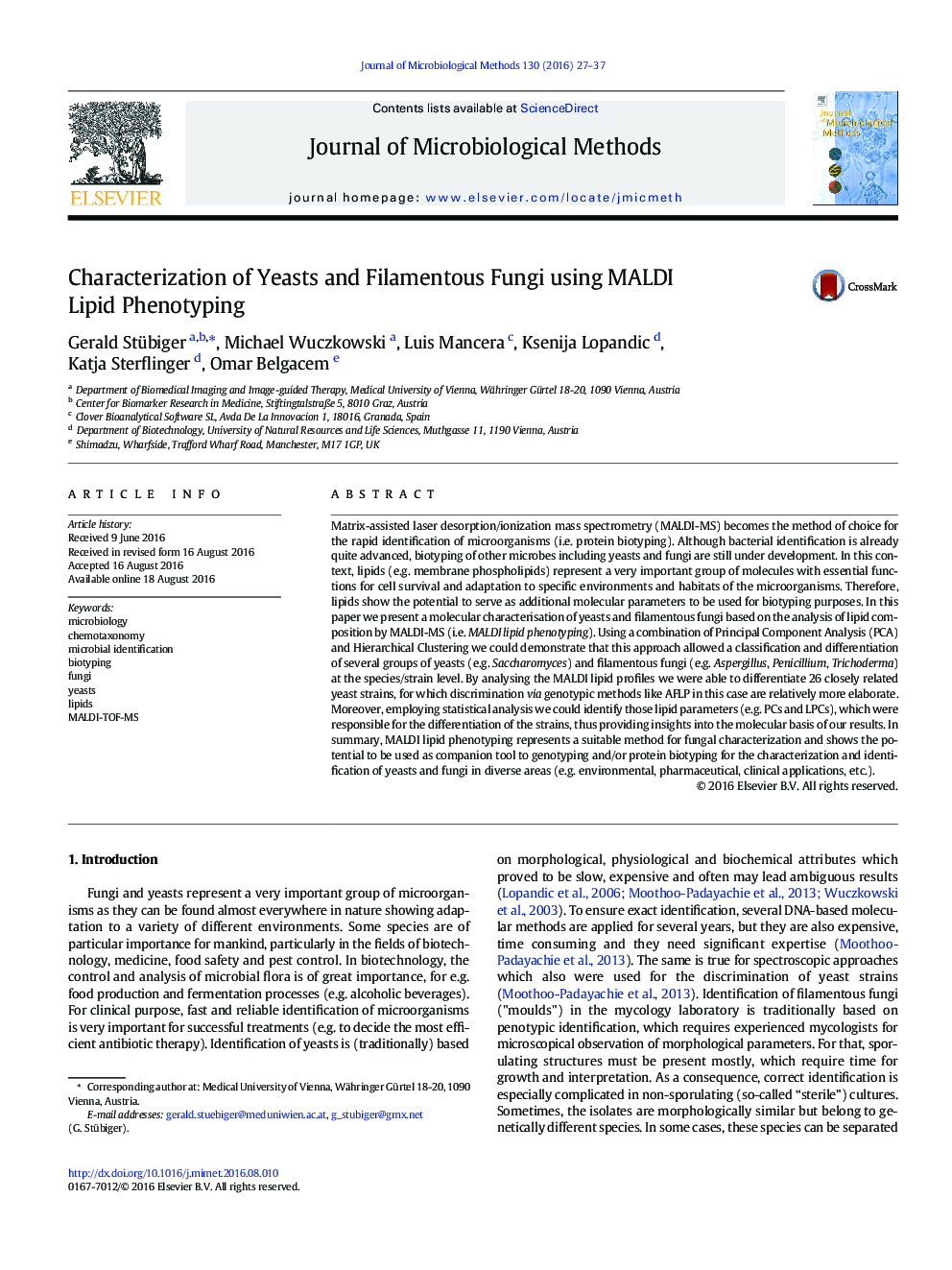| کد مقاله | کد نشریه | سال انتشار | مقاله انگلیسی | نسخه تمام متن |
|---|---|---|---|---|
| 2089652 | 1545913 | 2016 | 11 صفحه PDF | دانلود رایگان |
• New method for the characterisation of yeasts and filamentous fungi by MALDI-MS.
• Use of lipid composition for differentiation of fungal species and strains.
• Bioinformatics based approach (e.g. PCA, hierarchical clusterting).
• Companion tool to genotyping and/or protein biotyping of fungi.
• Diverse applications (e.g. environmental, pharmaceutical, clinical, etc.).
Matrix-assisted laser desorption/ionization mass spectrometry (MALDI-MS) becomes the method of choice for the rapid identification of microorganisms (i.e. protein biotyping). Although bacterial identification is already quite advanced, biotyping of other microbes including yeasts and fungi are still under development. In this context, lipids (e.g. membrane phospholipids) represent a very important group of molecules with essential functions for cell survival and adaptation to specific environments and habitats of the microorganisms. Therefore, lipids show the potential to serve as additional molecular parameters to be used for biotyping purposes. In this paper we present a molecular characterisation of yeasts and filamentous fungi based on the analysis of lipid composition by MALDI-MS (i.e. MALDI lipid phenotyping). Using a combination of Principal Component Analysis (PCA) and Hierarchical Clustering we could demonstrate that this approach allowed a classification and differentiation of several groups of yeasts (e.g. Saccharomyces) and filamentous fungi (e.g. Aspergillus, Penicillium, Trichoderma) at the species/strain level. By analysing the MALDI lipid profiles we were able to differentiate 26 closely related yeast strains, for which discrimination via genotypic methods like AFLP in this case are relatively more elaborate. Moreover, employing statistical analysis we could identify those lipid parameters (e.g. PCs and LPCs), which were responsible for the differentiation of the strains, thus providing insights into the molecular basis of our results. In summary, MALDI lipid phenotyping represents a suitable method for fungal characterization and shows the potential to be used as companion tool to genotyping and/or protein biotyping for the characterization and identification of yeasts and fungi in diverse areas (e.g. environmental, pharmaceutical, clinical applications, etc.).
Journal: Journal of Microbiological Methods - Volume 130, November 2016, Pages 27–37
